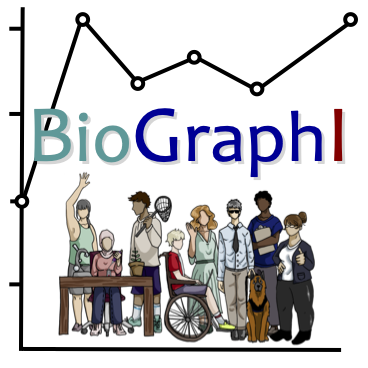Unveiling Lizard Evolution: Graphical Insights into Behavioral Ecology in the Era of Climate Change
Author(s): Min Zhong1, Daniel Warner1
Auburn University
724 total view(s), 429 download(s)
1_LessonGuide_Lizard Evolution.docx.pdf(PDF | 380 KB)
- BioGraphI Interview with Dr. Daniel Warner - YouTube
- 1_LessonGuide_Lizard Evolution.docx - Google Docs
- 2_PresentationSlides_Lizard Evolution.pptx - Google Slides
4_Activity 1 Appetizer Discussion_Lizard Evolution.pdf(PDF | 203 KB)
5_Student worksheet_Lizard Evolution.pdf(PDF | 547 KB)
6_Student worksheet-teacher version_Lizard Evolution.pdf(PDF | 566 KB)
7_Reflective Essay_Lizard Evolution.pdf(PDF | 178 KB)
8_Diversity in Biology_Lizard Evolution.pdf(PDF | 202 KB)
- License terms
Description
This lesson is designed for entry-level undergraduate students to comprehend and interpret scientific graphs. The materials here include an instructor guide (1_LessonGuide_Lizard Evolution), presentation slide deck (Google slides; 2_PresentationSlides_Lizard Evolution), and a link to the interview with Dr. Daniel Warner (BioGraphI Interview with Dr. Daniel Warner). In addition, some class activity materials are included as follows:
- 4_Activity 1 – “Appetizer” Discussion_Lizard Evolution
- 5_Student worksheet_Lizard Evolution
- 6_Student worksheet-teacher version_Lizard Evolution
- 7_Reflective Essay_Lizard Evolution
- 8_Diversity in Biology_Lizard Evolution
Content learning objective(s)
- Apply the scientific method to formulate a scientific question and testable hypothesis.
- Explain the significance of evolutionary concepts in behavior ecology.
- Discuss and predict how global climate change influences the adaptation and evolution of the lizard population.
Quantitative learning objective(s)
- Interpret graphs and/or data figures related to the concepts from this lesson.
- Reflect on your perceptions about using graphs or figures in biology.
Diversity/equity/inclusion learning objective(s)
- Reflect on your perceptions of people who do biology.
- Compare your own interests and/or identities to those of people who do biology.
Notes
This version does not include any limitations or differences from previous versions, as this is the initial release.
Cite this work
Researchers should cite this work as follows:
- Zhong, M., Warner, D. (2023). Unveiling Lizard Evolution: Graphical Insights into Behavioral Ecology in the Era of Climate Change. BioGraphI FMN Spring 2023, QUBES Educational Resources. doi:10.25334/J6AM-WZ49
